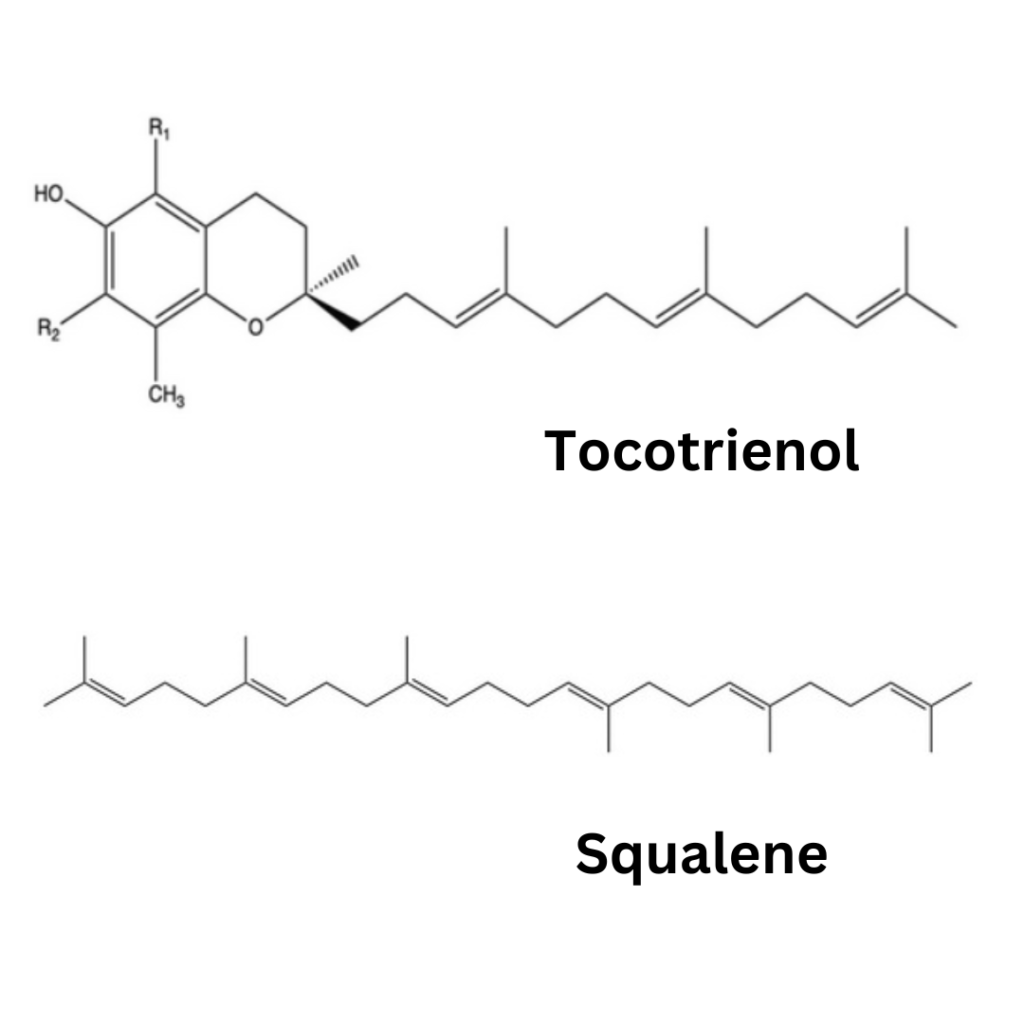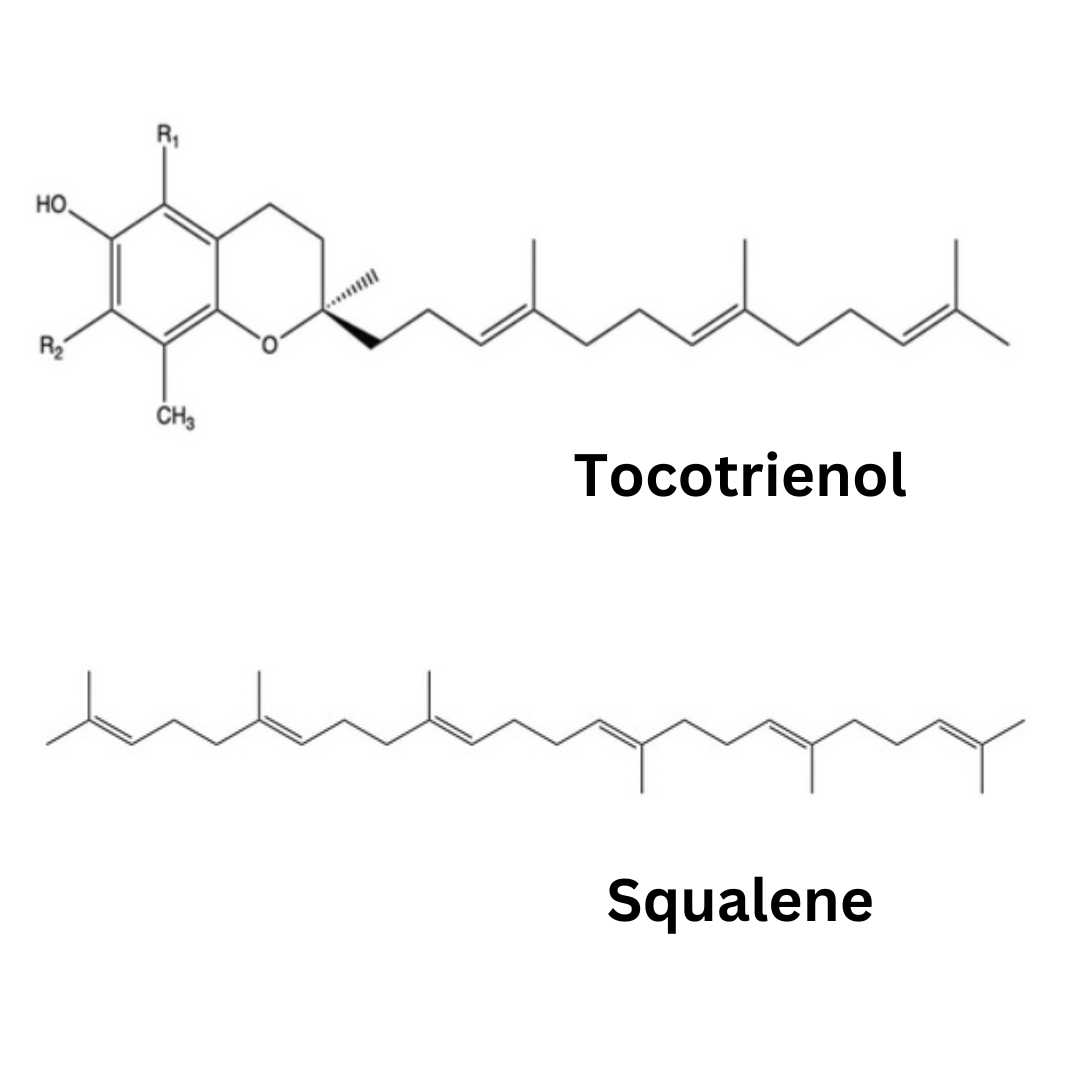Introduction
The skin, as the largest organ of the body, is a complex barrier that protects against a variety of external threats, including UV exposure, pathogens, and environmental pollutants. Despite its resilience, the skin is vulnerable to a range of conditions such as acne, eczema, and psoriasis, as well as the effects of aging like pigmentation and wrinkles. With rising interest in alternatives for skin care, two compounds tocotrienols, a subtype of vitamin E, and squalene, a lipid found in sebum are gaining attention for their potential in supporting skin health. This review synthesizes current research on their roles in skin protection, inflammation mitigation, and wound healing.
Key Findings
• Tocotrienols (T3):
- Tocotrienol-rich fraction (TRF) from Vitamin E exhibits strong antioxidant and anti-inflammatory effects.
- Inhibits release of pro-inflammatory mediators like interleukins and cyclooxygenase (COX), reducing excessive inflammation.
- Neutralizes reactive oxygen species (ROS), minimizing oxidative stress and damage at the wound site.
- Promotes fibroblast proliferation and collagen deposition, aiding in the remodeling phase of wound healing.
- Supports tissue repair and faster recovery by regulating inflammation.
• Squalene:
- Enhances skin moisture retention, vital for optimal wound healing.
- Promotes keratinocyte migration and collagen synthesis, accelerating tissue regeneration.
- Reduces ROS at the wound site, limiting oxidative damage to newly formed skin cells.
- Decreases transepidermal water loss (TEWL), maintaining skin hydration and preventing dryness during healing.
Conclusion
This review highlights the significant roles of tocotrienols and squalene in skin health. Tocotrienols show remarkable potential in combatting oxidative stress and inflammation, while squalene offers robust moisturizing and wound healing properties. Together, these compounds present exciting opportunities for developing innovative dermatological treatments. Continued research into their mechanisms of action and clinical applications could unlock new, natural solutions for managing a wide spectrum of skin conditions, from inflammation to aging-related changes.
Link to the study: https://tinyurl.com/2p8dmuzm


